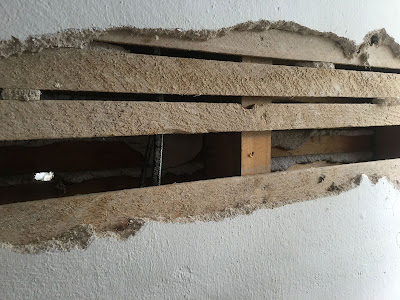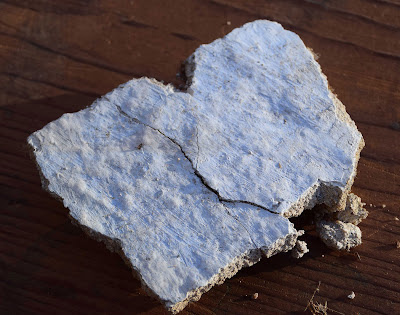Plaster has served as a durable coating for interior walls in both high style and common buildings for centuries. 19th century wall plaster was made from four ingredients: lime, sand aggregate, fiber and water. The lime was the most important part of the mix as it cured and hardened much like concrete. Sand was a filler that also added structure. Water was the catalyst and the fiber held it all together while the plaster mix cured and hardened. Gypsum replaced lime in the late 19th century because it set more rapidly and provided a hard, more durable finish that cured much more quickly. Since gypsum sets in minutes and cures in weeks (lime plaster required months to cure before it could be painted or papered), it made the addition of fiber unnecessary.
The lime was often produced in kilns from local limestone deposits. The sand aggregate usually came from a nearby river or lake which could also provide fresh water for mixing. What was the source of the fiber? More often than not, it also came from local source: an unsuspecting cow or horse from the barn out back.
I attended a workshop on repairing historic plaster organized a while back sponsored by Rethos. Our leader for the day was Anders Christensen of TigerOx, a Twin Cities painting company that frequently works on historic buildings. Rather than spending the day in a classroom we had the privilege of working on an actual historic site, the 1867 Andrew Peterson farmhouse in Waconia, MN.
In high style houses the plaster was applied in three coats over split or sawed lathe. The first two coats, called the scratch and brown coats, were thick, coarse and contained the animal fiber with lots of aggregate. This constituted the bulk of the wall plaster. These two coats were finished with a thin layer of finish plaster. The finish coat had little to no aggregate and was troweled to a smooth finish.
However, when we looked at the walls in the Peterson house, we found something quite different. The Peterson house was built by Andrew himself, who was a farmer and not a professional carpenter or plasterer. Rather than three coats, we found one, rather coarse coat of plaster. This was not uncommon at all in vernacular buildings such as farmhouses that weren’t built by professional tradesmen.
 |
What was also interesting was what you could see in a few chunks of loose plaster. The animal hair used to bind the plaster was quite obvious. I’m not sure what sort of critter donated its hair in 1867, but it was chestnut brown and rather soft. A horse, perhaps? Whatever it was, it is long, long gone. That is, with the exception of its hair which survives 150 years later in the walls of the Peterson farm house.
Something else that interested me were traces of paint on another piece of plaster. I noticed a few remnants of a light, purplish-blue paint. The color is a light pastel which was common in house interiors into the 20th century. I suspect it is a calcimine paint. Calcimine paints were mixed with water and fairly durable because the pigments were bound to the wall with lime.
The next time you find yourself in a 19th century home, take a look at the plaster walls. Is it coarse with lots of sand or is it troweled smooth and flat? If it is smooth, it probably was applied by a skilled tradesman. If not, it might have been plastered by the homeowner himself. In either case, some sort of quadruped also made its own, valuable contribution.


0 Comments